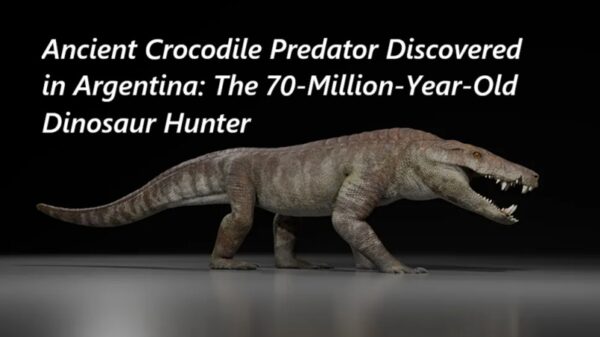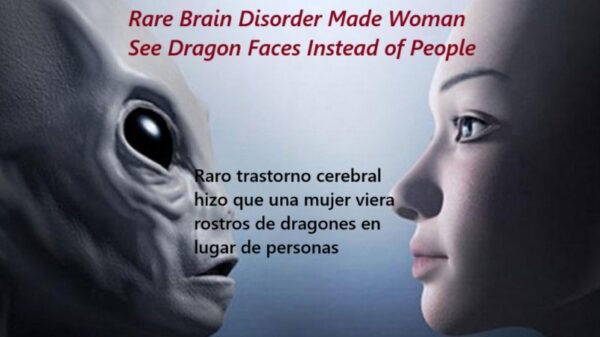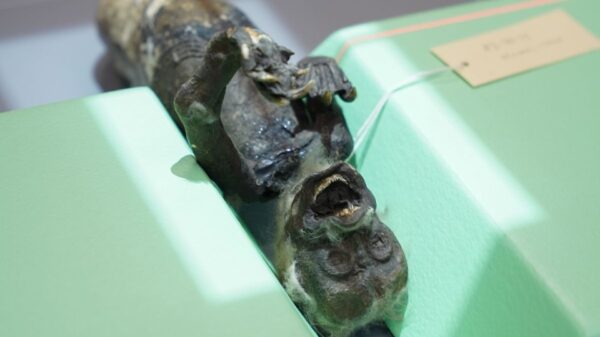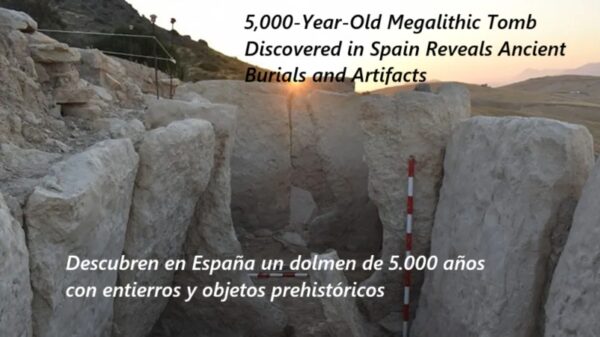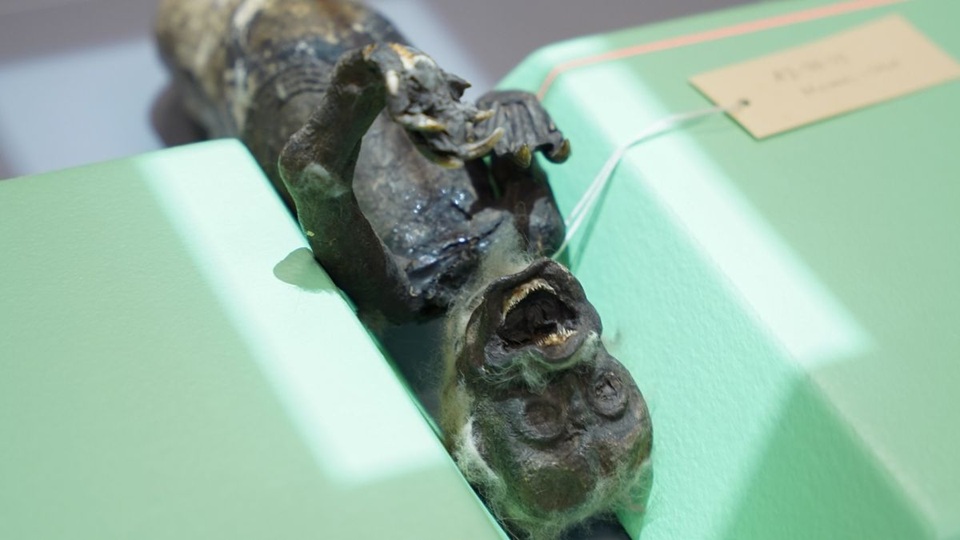Scientists have analyzed the mummified remains of a mysterious “mermaid” brought from Japan to the U.S. in 1906. Initial scans reveal that it is a gruesome combination of parts from different animals: the head and torso of a monkey sewn onto the body of a fish, with clawed lizard legs—possibly from a Komodo dragon—attached as hands.

The mummy, about 29 centimeters (11.5 inches) long, is known as the “Fiji mermaid” because it resembles a famous object displayed by showman P.T. Barnum in the 1840s. It was purchased in Japan by an American naval officer and donated to the Clark County Historical Society in Ohio. Documents suggest it dates back to the mid-1800s.

X-ray and CT scans revealed two wooden stakes inside the mummy—one running from head to tail and another across the shoulders—likely used to keep the figure together. Researchers are now creating a detailed 3D model to send to zoos and aquariums to help identify the species used.

Similar mummified “mermaids” have been found before. In 2022, a specimen discovered in a Japanese temple was thought to be a monkey-fish hybrid, but scans showed it was mostly made of cloth, paper, and cotton, covered with sand and charcoal, with animal parts attached to the outside.

Both examples resemble the “ningyo” of Japanese folklore—mythical fish-like creatures with human heads. According to legend, eating the flesh of a ningyo could give a person extraordinary longevity, and such items may have been made by fishers to sell to wealthy buyers seeking long life.







